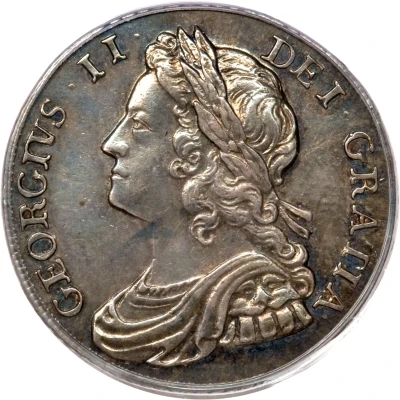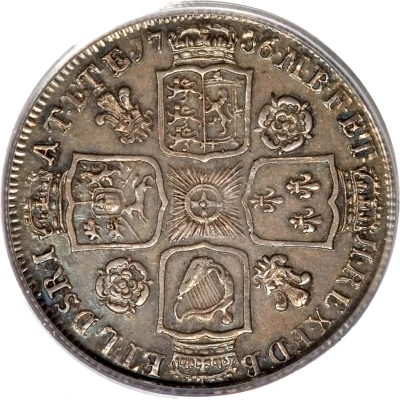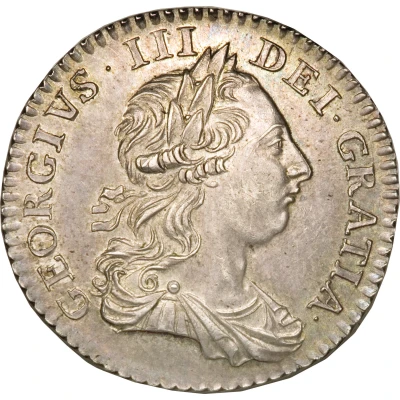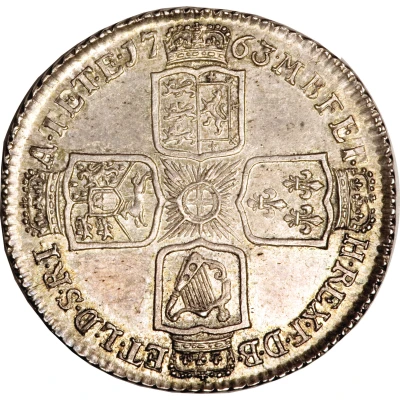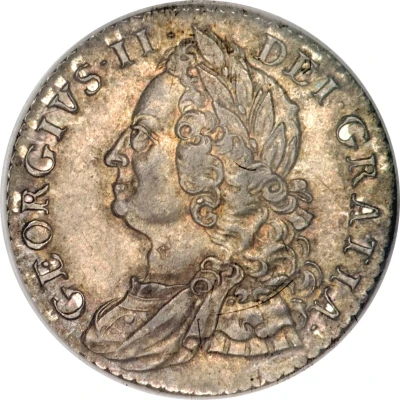
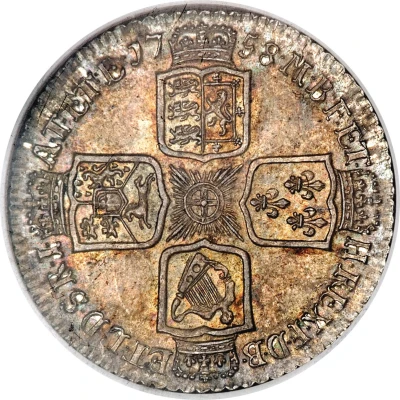

1 Shilling - George II Older bust
| Silver (.925) | 6.02 g | 25 mm |
| Issuer | United Kingdom (United Kingdom, British Overseas Territories and Crown Dependencies) |
|---|---|
| King | George II (1727-1760) |
| Type | Standard circulation coin |
| Years | 1743-1758 |
| Value | 1 Shilling (1⁄20) |
| Currency | Pound sterling (1158-1970) |
| Composition | Silver (.925) |
| Weight | 6.02 g |
| Diameter | 25 mm |
| Shape | Round |
| Technique | Milled |
| Orientation | Coin alignment ↑↓ |
| Demonetized | 3 March 1817 |
| Updated | 2024-10-09 |
| Numista | N#13121 |
|---|---|
| Rarity index | 27% |
Reverse
Crowned cruciform shields with central Garter star, divided date above, legend around.
Note: varieties exist (see below)
Script: Latin
Lettering: M·B·F·ET H·REX· F·D·B ET·L·D·S·R·I A·T·ET·E 17 58·
Unabridged legend: Magnae Britanniae Franciae Et Hiberniae Rex Fidei Defensor Brunsviciensis Et Lunebergensis Dux Sacri Romani Imperii Archithesaurarius Et Elector
Translation: King of Great Britain France and Ireland Defender of the Faith Duke of Brunswick and Lueneburg Arch Treasurer and Elector of the Holy Roman Empire
Engraver: Johann Ochs
Edge
Slant-reeded right
Comment
House of Hanover (1714-1901), George II (1727-60), Older bust (1743-58), Sterling silver shilling.
The standard weight of these coins was 6/31 troy ounce (92.9 grains).
1745-46 LIMA pieces were struck from a large hoard of silver captured from the Spanish by Admiral Anson's squadron operating in the Pacific Ocean. The word "Lima" engraved under the bust is a reference to the fact that the Spanish silver was being shipped from Lima, Peru back to Spain when it was intercepted by Anson.
Obverse and reverse die varieties:
1743-45 Legend reads 'GEORGIUS'
1746-58 Legend reads 'GEORGIVS'
KM#583.1, Sp#3702 (1743-47) Roses in angles;
KM#583.2, Sp#3703 (1745-46) LIMA below bust;
KM#583.3, Sp#3704 (1746-58) Plain angles;
Interesting fact
One interesting fact about the 1 Shilling - George II (Older bust) coin is that it was minted during a time when the United Kingdom was experiencing significant changes in its economy and trade. The coin was minted between 1743 and 1758, a period when the UK was seeing an increase in trade and commerce, particularly with its colonies in North America. This led to an increase in the demand for coinage, and the minting of coins like the 1 Shilling - George II (Older bust) helped to meet this demand. Despite being made of silver, the coin was still relatively affordable for the average person, making it a popular choice for everyday transactions.
Price
| Date | Mintage | VG | F | VF | XF | AU | UNC |
|---|---|---|---|---|---|---|---|
| 1743 | - | - | - | - | - | - | |
| 1745 LIMA | - | - | - | - | - | - | |
| 1746 | - | - | - | - | - | - | |
| 1750 | - | - | - | - | - | - | |
| 1758 | - | - | - | - | - | - |
Values in the table are based on evaluations by sales realized on Internet platforms. They serve as an indication only for 1 Shilling - George II (Older bust) 1743-1758 coin.
